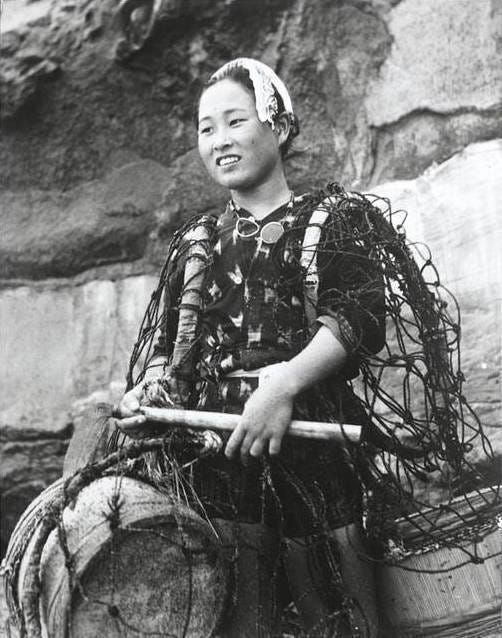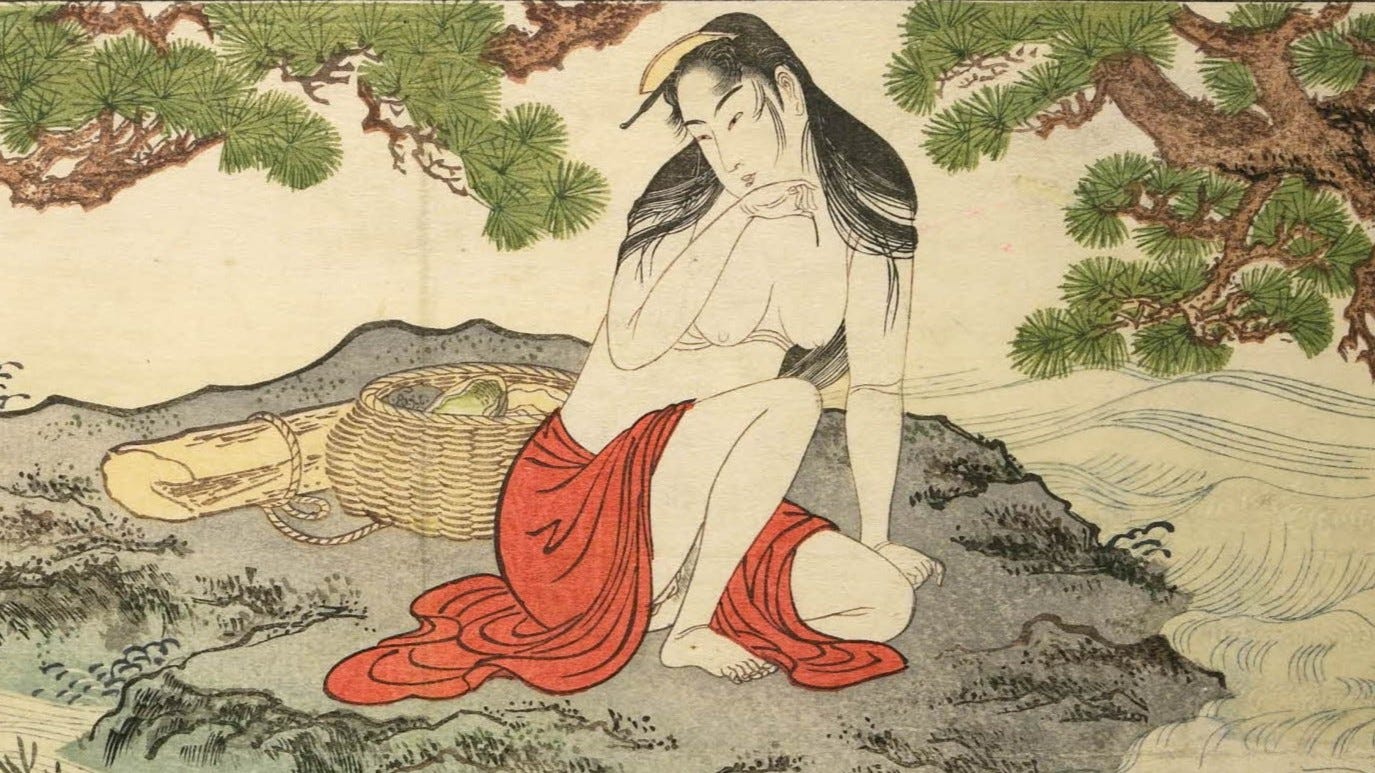🚨 The Sexy Diving Grandmas of Japan
Oh, Obāchan!

🚨 Some of these images are explicit, so be warned.
If you’re quietly relaxing on the beach in Ise Bay, you may hear a mysterious whistling sound. The isobue (磯笛, “coast whistle”) is the sound made by an ama (海女, “sea woman”) diver as she comes up for air. The slow whistle prevents hyperventilation and allows her to dive many times in short succession.
Ama divers may have existed in Japan for 2000 years or more!
In the world of imagination, somewhere between catgirls and J-pop idols, these divers are bad-ass, topless geisha babes diving for pearls.

In the real world, they are bad-ass, wetsuit-wearing grandmothers diving for seaweed, shellfish, and sea slugs.
Unfortunately, the ama tradition is endangered. Very few young women take up the work, so the average age has been climbing well into the ages where people stop taking creepy pics of them. On top of that, global warming and water pollution are kicking these ecosystems in their sea cucumbers. You may not be able to hear the whistling much longer.
So why are ama women and not men? Opinions are divided.
Anthropologists have claimed that since men were away all day on fishing boats, women were left at the shore and needed something to fill their copious free time between harvesting nuts and berries, repairing nets, cooking, doing laundry, and rearing children.
Some physiologists think that women’s higher body fat allows them to endure the cold water better. According to comedians, this is also the source of the “yo ama so fat...” jokes that were all the rage in the Heian period.
Religious scholars believe it was for ceremonial reasons: abalone shells were a common offering to Amaterasu, the female sun goddess, and such a gift must obviously be collected by a woman.
Content creators know best, though: topless diving ladies generate more clicks and ad revenue. The early descriptions of ama were written by foreigners and the Japanese elite. There’s a lot of “Look at these strange/exotic/uncouth women doing weird things!”
The ama did indeed dive in only tiny loincloths, hardly more than rope thongs, but that was for practical rather than sexual reasons: Olympic swimmers don’t dive in the pool fully clothed, either.

The ama were also not any more or less sexually promiscuous than other Japanese women at the time. But boobage sold, and the male ama (usually called kaijin) were less effective clickbait.
Archaeology is coy with pronouns. There are piles of discarded shells from more than 2000 years ago, but we can’t tell whether men or women caught the shellfish. We also found pointy pieces of bone tools that could have been used to pry shells off rocks, but again, their original owners were most inconsiderate and didn’t color these tools pink or blue.
The first written references to diving in Japan comes from China. The Wajinden (~290 AD), part of the Records of the Three Kingdoms, mentions that the people of Japan dive for shells and fish, but the language is gender neutral. Frustrating to historians, but pleasing to Gen Z.
The next 1500 years of art and literature saw an increasing emphasis on the female ama, culminating in the famous Hokusai print of a nude ama enjoying some sexy time with two octopodes...octopi...octo...takoyaki ingredients.

Woodblock prints always showed ama diving topless, in only a small loincloth.

Until the middle of the 20th century some ama indeed continued to dive like this. Italian photographer Fosco Maraini documented this dying tradition in the 1950s, the only addition to the traditional outfit being a pair of diving goggles.
Today’s remaining ama usually dive in wetsuits, with goggles, but still without air tanks, snorkels, or flippers.

They still whistle. We don’t talk about the octopus business.


One reason unofficially given to men not diving was that their manhood reacted badly to pressure of deep...
Fascinating cultural detail! Thanks for the cool article. I've read that women's bodies use oxygen more efficiently than men's, which would make it easier to hold their breath longer.